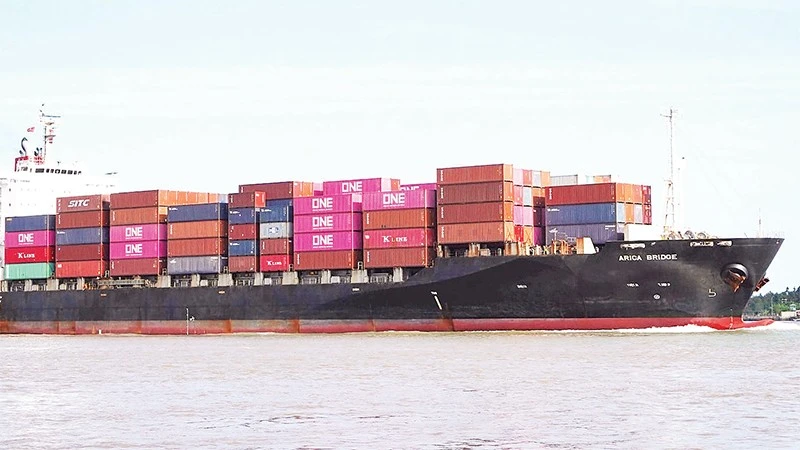Focusing on exports to South Asia
Amid the risk of high tariffs imposed by the United States, businesses in Ho Chi Minh City in particular and the Southeast region in general are striving to diversify export markets, with a focus on South Asia.

According to Dr Le Thi Mai Anh, Head of the Southeast Asia, South Asia and Regional Cooperation Division (Department of Foreign Market Development, Ministry of Industry and Trade), South Asia comprises eight countries: India, Pakistan, Bangladesh, Nepal, Bhutan, Maldives, Sri Lanka, and Afghanistan, with a total population of more than 1.8 billion, accounting for nearly one-fourth of the global population. Among them, the four key markets are India, Pakistan, Bangladesh, and Sri Lanka. India, the most populous country (around 1.45 billion people) and the fourth-largest economy in the world, serves as a gateway for trade.
Accessing India could open up opportunities to penetrate other countries in the region. The geographical distance between the Southeast region and South Asia is relatively short, favourable for maritime transport. Goods from the Southeast region can be transported by sea to major ports such as Mumbai (India), Karachi (Pakistan), Chittagong (Bangladesh).
South Asian countries import a wide range of goods such as consumer products, processed foods, health and beauty care products, electronic components, construction materials, and raw materials for the textile, garment, and footwear industries. Notably, South Asian nations are seeking supply sources from Southeast Asia to reduce dependence on China.
However, South Asia remains a challenging market for new businesses lacking trade experience. With a low to middle-income level, consumers are quite price-sensitive and mostly prefer inexpensive products. They often favour goods packaged in small units and are drawn to promotional items. They also pay attention to quality certification on packaging and have an increasing awareness of health protection and food safety.
According to Dr Le Thi Mai Anh, Vietnamese businesses need to consider religious characteristics in South Asian countries, such as Hinduism in India, Buddhism in Sri Lanka, and Islam in Pakistan and Bangladesh... These countries also frequently change their trade policies abruptly and tend to increase domestic market protection through technical barriers or "sub-licence"-type regulations.
To achieve effective export results to South Asian countries, Le Thi Mai Anh suggested that Vietnamese enterprises should thoroughly study the consumer characteristics of each country and understand their partners' needs. With the rapidly growing middle class (expected to reach about 700 million people by 2030), exporters should focus on consumption trends among this demographic and young people; actively participate in trade fairs to connect with potential partners and customers.
As online shopping increases and e-commerce thrives, businesses should leverage and explore popular e-commerce platforms in India such as Amazon India, Flipkart, Daraz... and invest in digital marketing strategies and advertising on widely-used social media platforms like YouTube and Instagram.
According to Associate Professor Dr Trinh Thi Thu Huong (Deputy Director of the Institute of International Economics and Business, Foreign Trade University), the biggest issue in South Asia is poor logistics services, with outdated transport infrastructure, lack of seamless intermodal connectivity, and high transportation costs... Seaports are often overloaded, containers are in short supply, and customs clearance procedures are prolonged (ranging from 20 to 45 days)... Vietnamese businesses need to proactively establish direct connections with partners, visit them in person, and develop detailed logistics plans for each shipment.
In the Bangladeshi market, according to Do Van Trong, Head of the Liaison Committee of the Vietnamese Community in Bangladesh, Vietnamese enterprises should prioritise having a direct presence and develop marketing strategies tailored to local tastes and culture. Bangladeshi consumers care about both price and after-sales, promotional offers.
Associate Professor Dr Trinh Thi Thu Huong recommended that businesses carefully prepare documentation, records, and procedures, and prioritise hiring experienced domestic freight forwarding companies (in the importing countries). They should avoid transferring 100% payment with new clients to minimise risks, instead using letters of credit (LC); and avoid shipping close to local holiday periods due to the risk of goods being lost in the logistics process.








